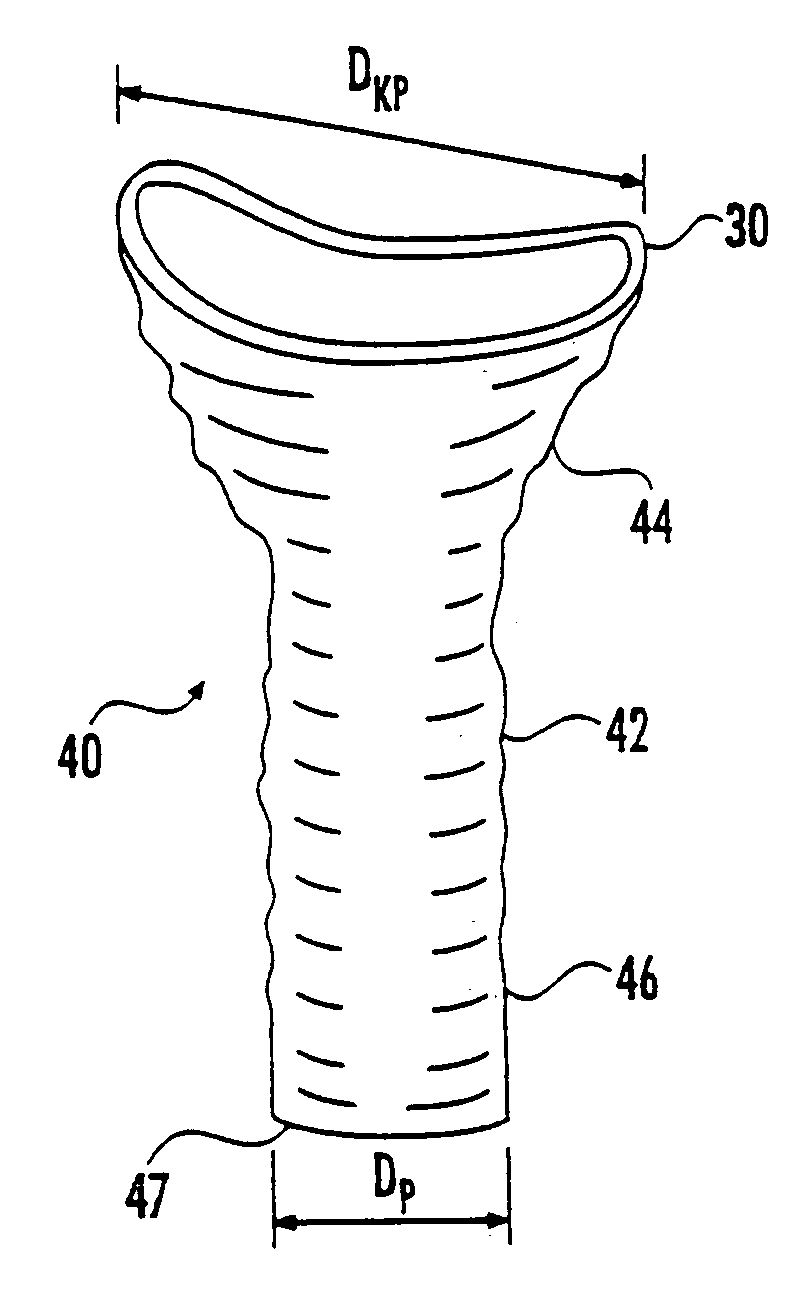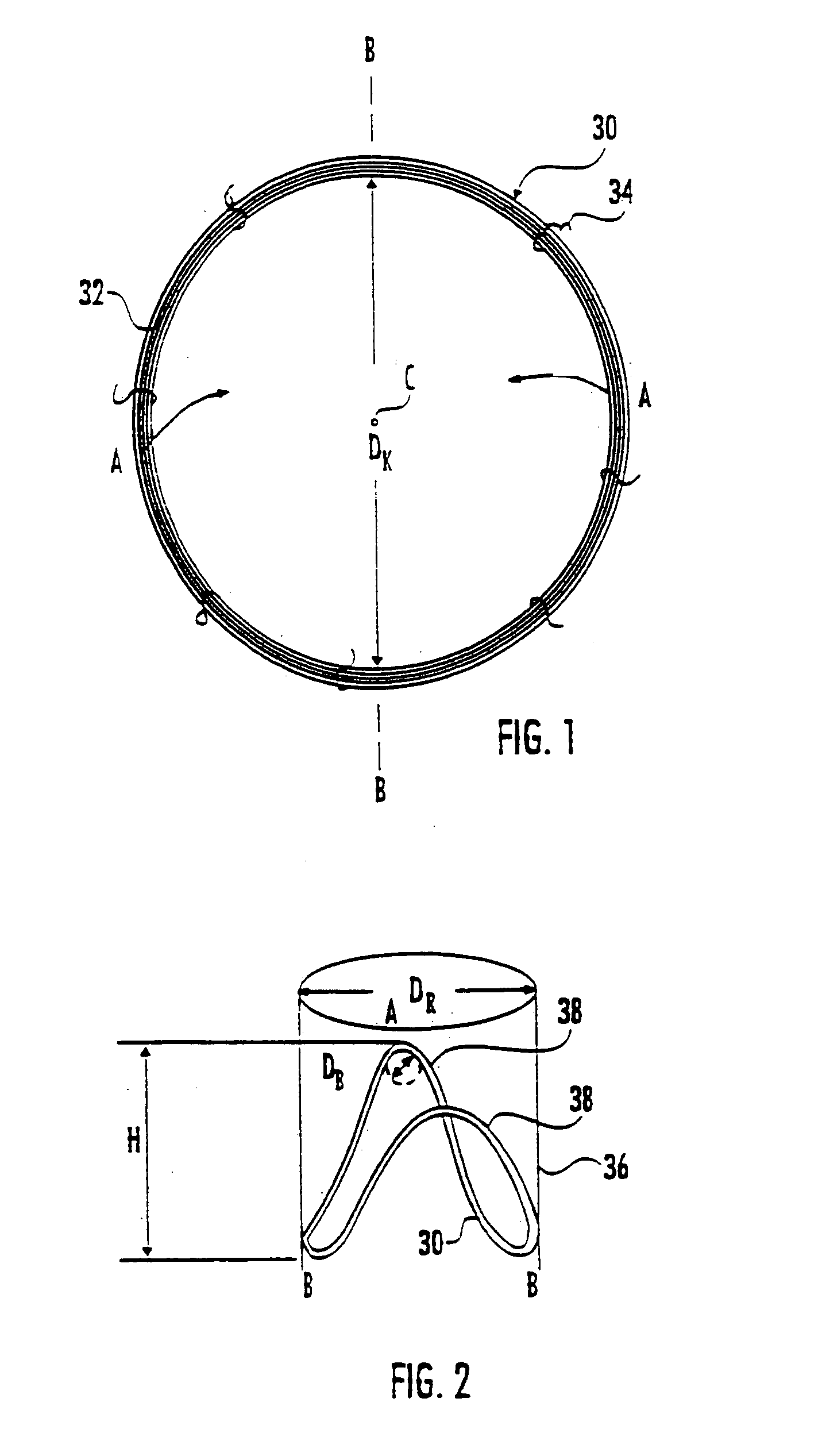Prosthetic repair of body passages
- Summary
- Abstract
- Description
- Claims
- Application Information
AI Technical Summary
Benefits of technology
Problems solved by technology
Method used
Image
Examples
Embodiment Construction
[0046] Referring to the drawing wherein like reference characters are used for like parts throughout the several views, an annular, resilient clamping ring 30 may be formed of a plurality of strands 32 of resilient wire as shown in FIGS. 1, 8 and 10. One embodiment of the ring 30 may be formed by a wrapping a single length of wire around the mandrel (not shown) having a central axis “C” and then securing the strands into a bundle using ties 34. The ties 34 may be formed from surgical suture material. Of course, the ring 30 may be formed by a variety of other techniques include the use of a single strand of wire, the use of multiple strands of helically intertwined wire, as in multi-strand wire rope, or any other suitable technique which forms a highly resilient annular ring.
[0047] The number of coils or strands 32 can be varied according to the wire utilized and the particular application involved. However, in one embodiment, the number of strands 32 utilized is approximately 8 to ...
PUM
 Login to View More
Login to View More Abstract
Description
Claims
Application Information
 Login to View More
Login to View More - R&D
- Intellectual Property
- Life Sciences
- Materials
- Tech Scout
- Unparalleled Data Quality
- Higher Quality Content
- 60% Fewer Hallucinations
Browse by: Latest US Patents, China's latest patents, Technical Efficacy Thesaurus, Application Domain, Technology Topic, Popular Technical Reports.
© 2025 PatSnap. All rights reserved.Legal|Privacy policy|Modern Slavery Act Transparency Statement|Sitemap|About US| Contact US: help@patsnap.com



